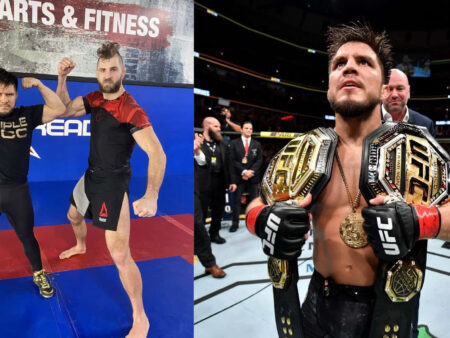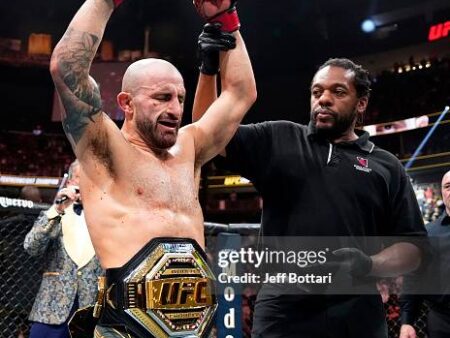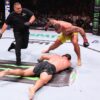CALGARY – In the realm of international ice hockey, few spectacles capture the collective imagination quite like a heated clash between Canada and the United States. The recent 4 Nations Face-off certainly delivered on that front, offering a captivating blend of elite skill and, for a fleeting nine seconds, a throwback to an era of bare-knuckle pugilism. Yet, as Team Canada`s General Manager, Doug Armstrong, gathers 42 Olympic hopefuls in Calgary, his message is unequivocally clear: the path to Olympic gold will be paved with strategic brilliance, not with the intention of re-enacting a fight club.
The Post-Brawl Reckoning: A Moment of Clarity
The skirmishes that punctuated the Canada-USA round-robin game in the 4 Nations Face-off sparked a familiar debate: does a team need “toughness” in the traditional sense – i.e., designated enforcers – to compete at the highest level? For a brief period, the hockey world seemed to ponder if such “hostility” warranted a strategic shift. However, Armstrong’s candid assessment from the orientation camp indicates a steadfast commitment to a modern hockey philosophy. He is not swayed by the momentary spectacle.
“I`ve thought quite a bit about that tournament as a whole, and I think the Olympics are going to be played very similar to that, minus (nine) seconds,” Armstrong stated. “If you win the front of your net, and the front of their net, you have a chance to win the game. We`re going to build a team that can win in those areas, but we`re not going to build a team that can participate in those (nine) seconds.”
This statement is more than just a dismissal of fighting; it`s a profound declaration of strategic intent. It suggests that while the intensity of international hockey remains paramount, the methods to channel and leverage that intensity have evolved significantly. The “nuclear deterrent” – a term often used playfully to describe a player whose primary role is intimidation – simply isn`t on Canada`s Olympic shopping list.
The Modern Hockey Imperative: Skill, Position, and Precision
Armstrong’s focus on “winning the front of your net, and the front of their net” highlights the core battles in contemporary hockey. This isn`t about throwing punches; it`s about:
- Defensive Zone Dominance: Clearing rebounds, denying opponents high-danger scoring chances, and physically out-muscling forwards for puck control.
- Offensive Zone Effectiveness: Establishing net-front presence, screening goalies, tipping shots, and converting opportunities in crowded areas.
These are demanding tasks requiring a blend of strength, agility, hockey IQ, and an unwavering battle ethic. They are skills that contribute to scoring and preventing goals, which, at the end of the day, is how hockey games are won. A player who can perform these tasks consistently across 200 feet of ice is infinitely more valuable than one whose primary contribution is limited to the occasional skirmish. The international ice surface, typically larger than NHL rinks, also favors speed, puck possession, and strategic positioning over a grinding, physical game that relies on tight checks and board battles.
Beyond the Brawn: A Holistic Player Evaluation
With nearly 100 players under consideration, the Team Canada Olympic roster construction is a meticulous process. The coaching and management staff are scrutinizing every aspect of a player`s game, prioritizing attributes that directly translate to success on the Olympic stage:
- Versatility: Players capable of excelling in multiple roles and adapting to different line combinations.
- Puck Management: The ability to control the puck under pressure and make intelligent plays.
- Skating and Speed: Essential for both offensive transitions and defensive recovery.
- Discipline: Minimizing penalties is crucial in tournament play, where power plays can dictate outcomes.
- Goaltending: As highlighted in the peripheral discussions, the search for a stalwart goaltender remains a critical component, underscoring that specialized skill positions are prioritized, not generalized tough-guy roles.
The “nine seconds” of fisticuffs, while memorable, represent an anomaly in modern elite hockey. The rules and officiating in international tournaments typically discourage fighting with severe penalties, making it a distinct liability rather than a strategic asset. To intentionally roster a player for such a purpose would be, quite simply, counterproductive.
The True Deterrent: Overwhelming Talent and Tactical Superiority
There`s a subtle irony in discussing a “nuclear deterrent” in the context of hockey. While rivalries can be intense, the sport is not a battlefield where mutually assured destruction is a viable strategy. The most effective “deterrent” in Olympic hockey isn`t a player who can fight; it’s a team so overwhelmingly skilled, so tactically astute, and so disciplined that opponents struggle to generate any offense or maintain possession. It is the kind of team that dictates the pace, controls the puck, and executes flawlessly.
Doug Armstrong`s directive emphasizes precisely this. Team Canada`s Olympic hockey strategy for the upcoming games is a testament to the sport`s evolution. It`s a pragmatic, analytical approach focused on building a coherent unit designed for sustained excellence, not for a brief, theatrical show of force. The ultimate goal, as always, is to stand atop the podium, and that achievement, it seems, will be earned through refined skill, intelligent play, and an unwavering commitment to the strategic objectives on every shift, rather than the occasional swing of a fist.










